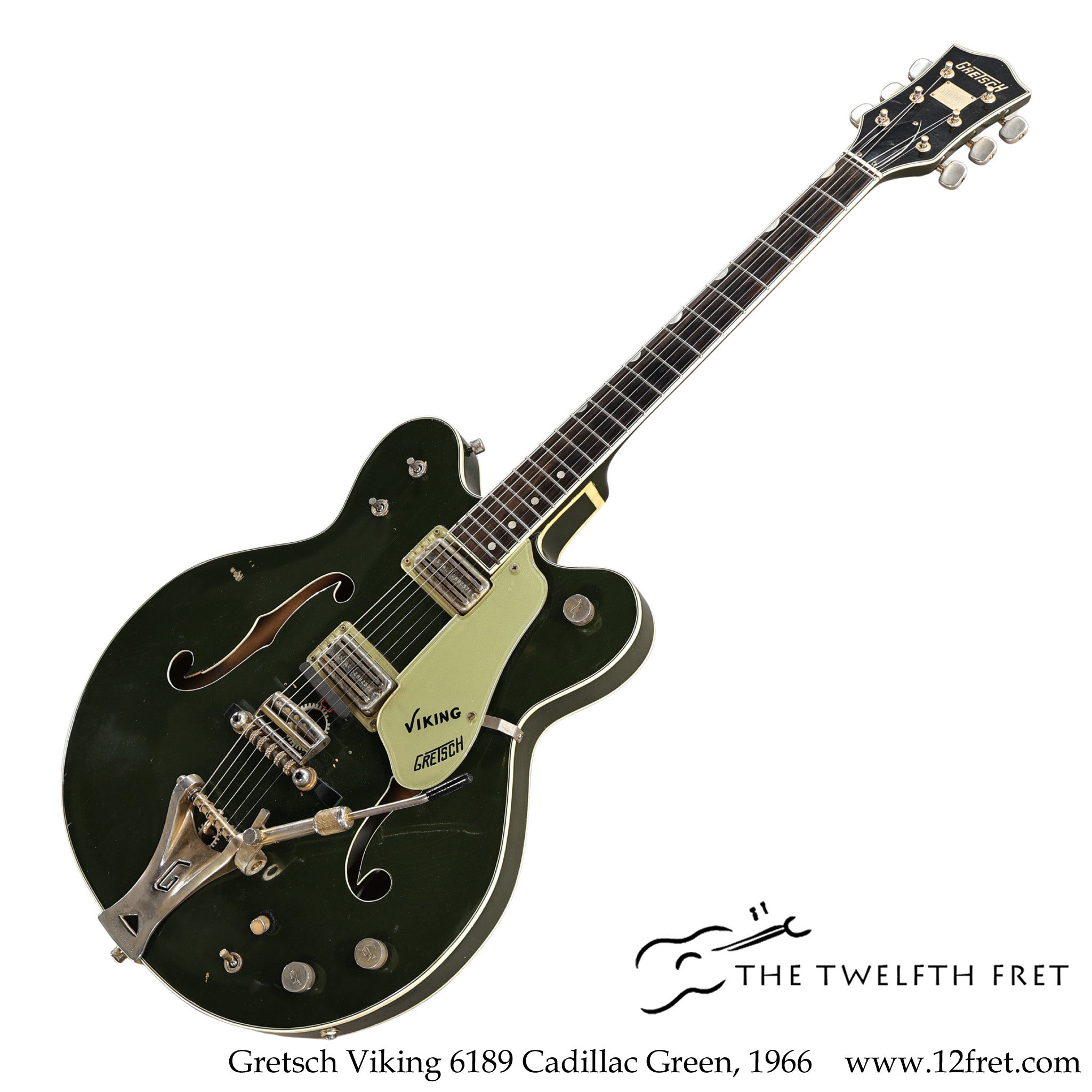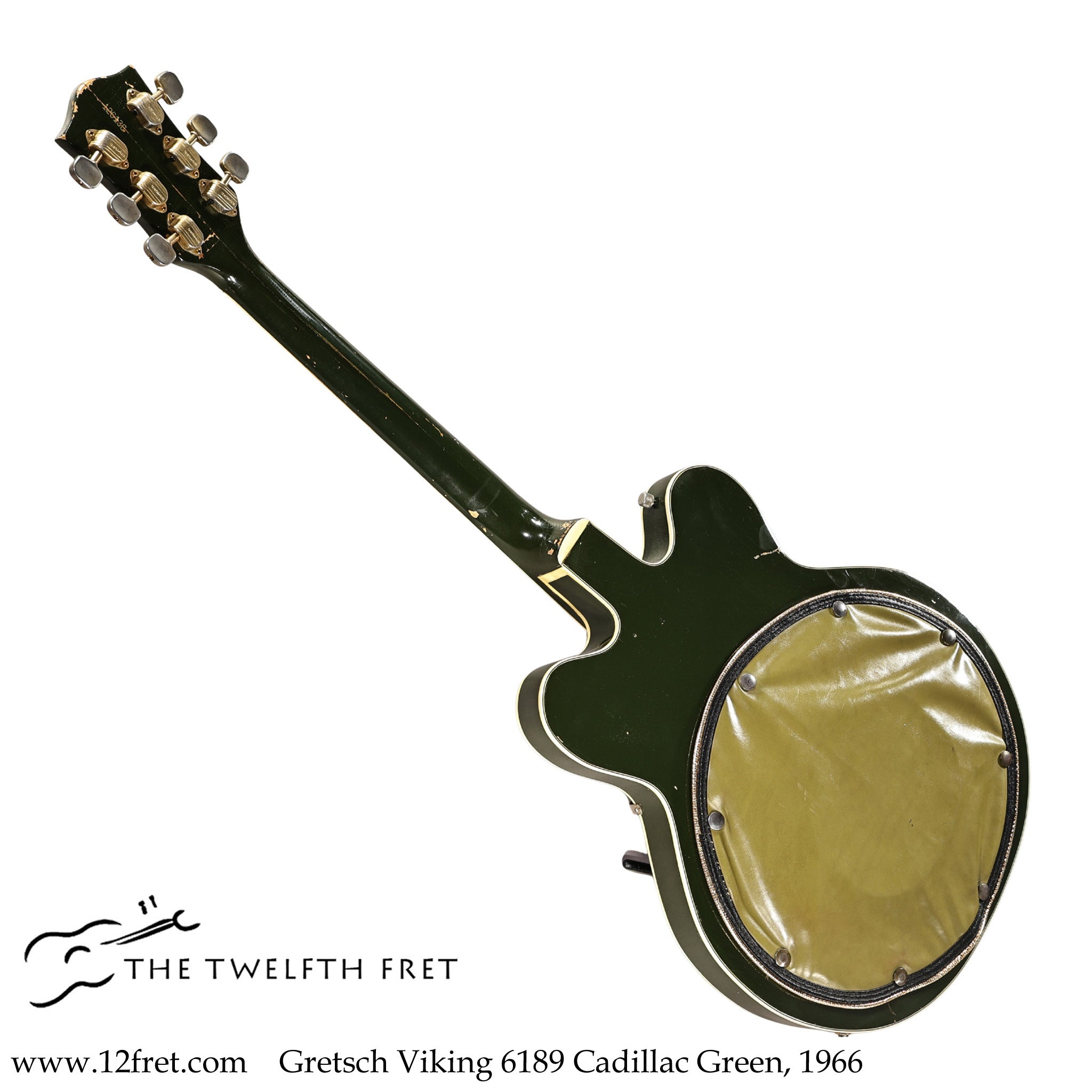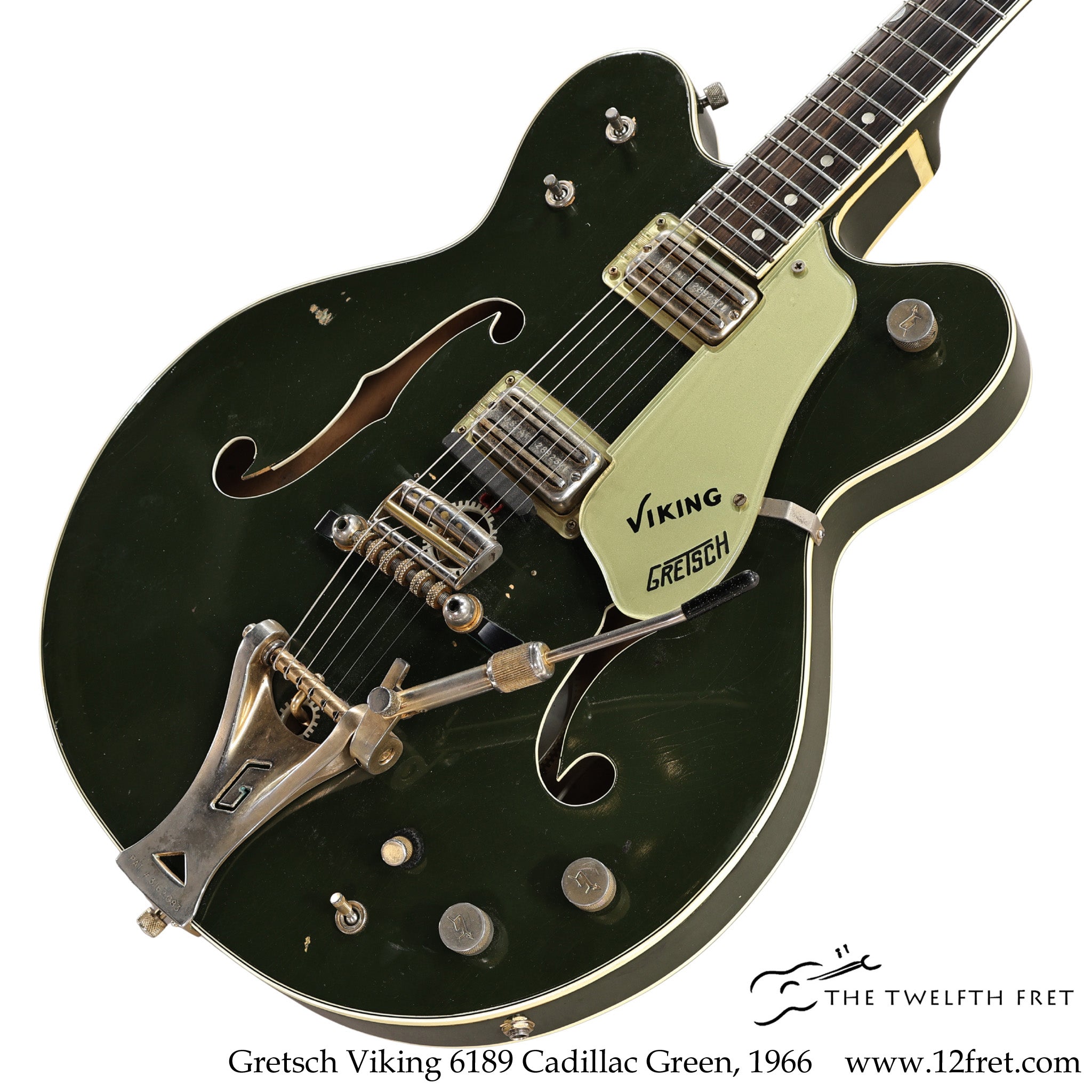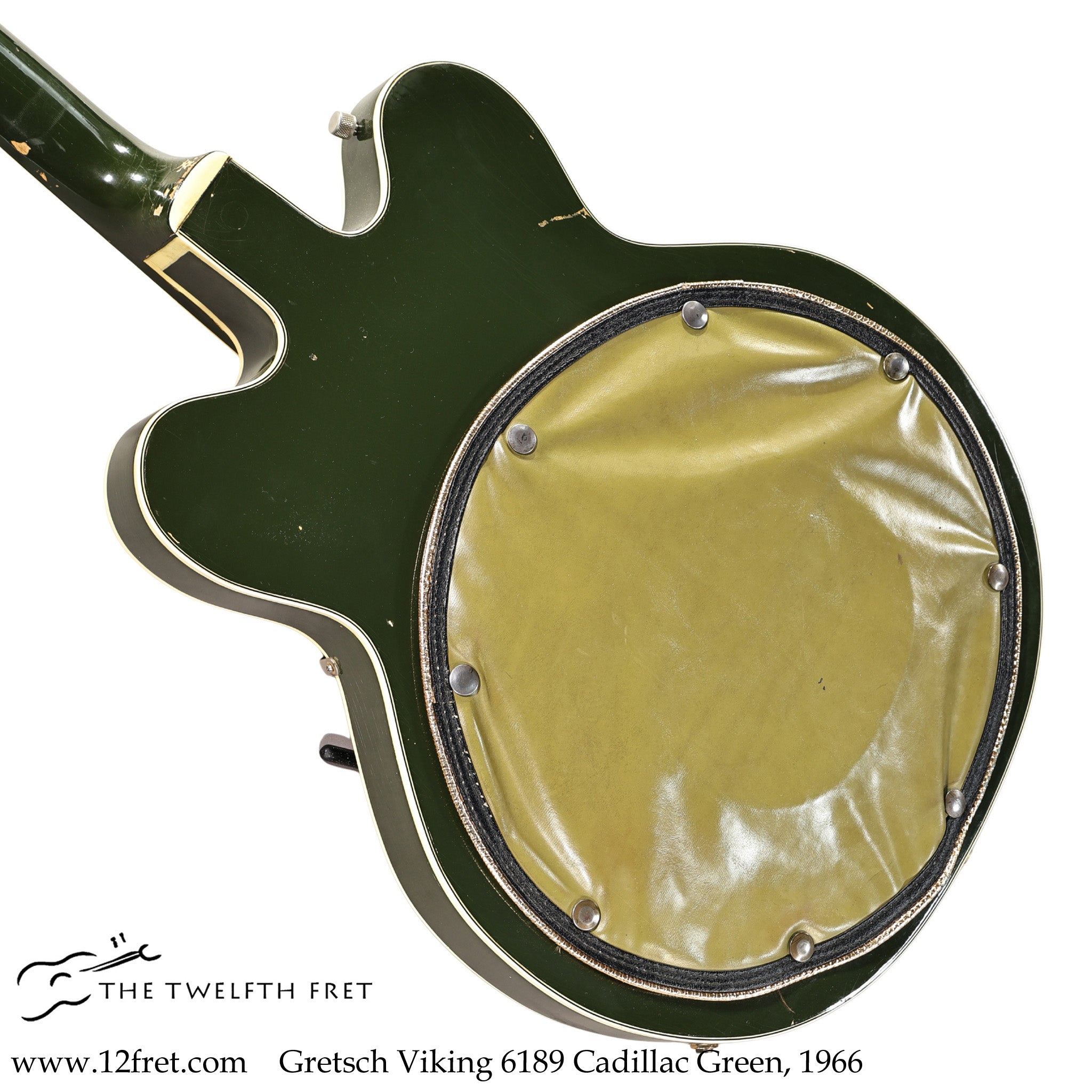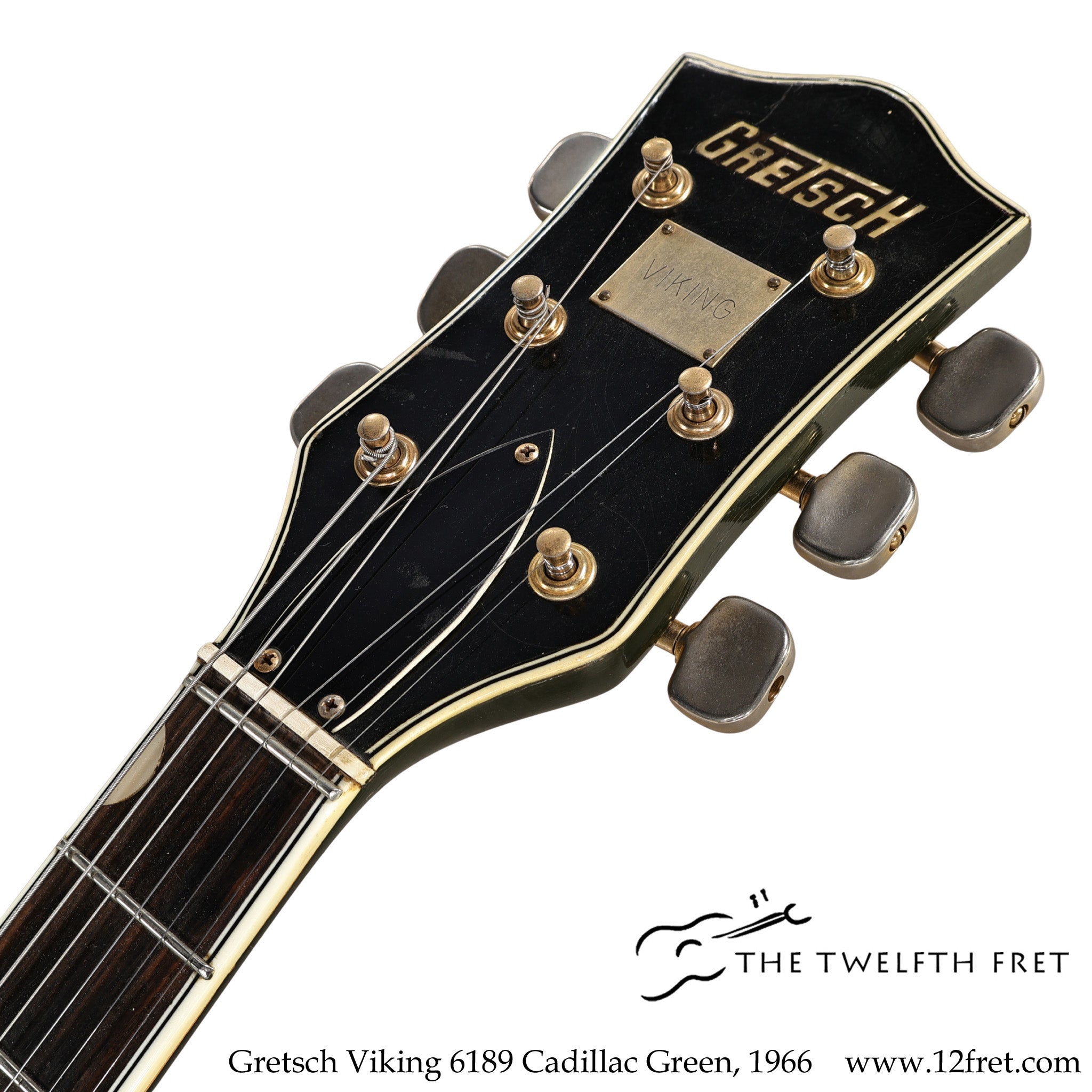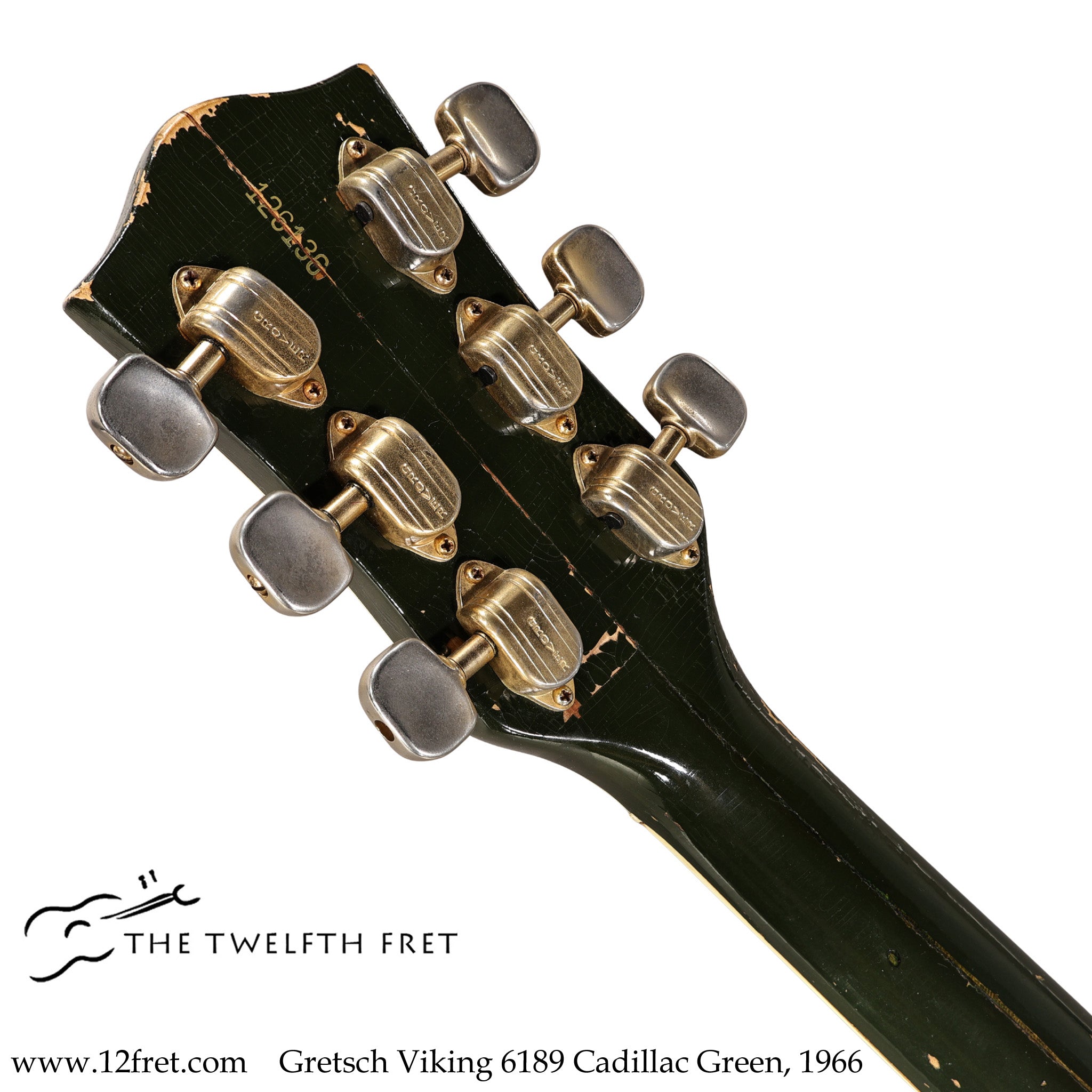Description
This Gretsch Viking 6189 Cadillac Green electric guitar was built before the sale to Baldwin. It is complete and mostly original, though the original case is long gone, and is in overall good condition. It has been refretted and there is plenty of fret material left. It plays well and the mid-60s style, somewhat narrow and slim neck profile is very comfortable.
The Gretsch Viking was built from 1964 to 1975 and was just below the White Falcon at the top of the Gretsch lineup. This model incorporated a number of advanced and unique features, some more practical and long-lasting than others.
The sound of the Super 'Tron pickups is fuller, punchier and a bit hotter than classic Filter 'Trons, with no note fade on string bending. The Cadillac Green finish is also in original condition and shows honest wear consistent with nearly sixty years of use. There is no binding deterioration, though there is some deterioration of the backpad and finish underneath. A small amount of binding is missing from the lower bass F-hole.
A non original hard shell case is included.
Model History
Following Gretsch practice, the original Viking model numbers from 1964 to 1966 varied with finish - 6187 for Sunburst, 6188 Natural, and 6189 Cadillac Green. In 1972, the designations changed to 7585 for Sunburst and 7586 in Natural. Michael Nesmith of The Monkees used a Sunburst 1965 Viking 6187 on many episodes of that show.
This Gretsch Viking 6189 in Cadillac Green with Jimmy Webster tailpiece has Serial number 126136. This dates it to December 1966 at Brooklyn, just as the sale to Baldwin was being worked out for completion on July 31 1967. During 1969, Baldwin moved production to Booneville, Arkansas. In 1973, devastating fires caused Gretsch guitar production to temporarily end, though drum production was moved to DeQueen, Arkansas.
Construction and Features
The Viking is a larger guitar, with a 17 inch wide, fully hollow double cutaway body and 25.59 inch (650mm) scale length. The bound F-holes are cut through (unlike some Country Gents where they were decals, the body sealed to reduce feedback). The body is Maple laminate, the neck Maple with a bound Ebony fingerboard. The position markers are Mother of Pearl - 'Neo-Classic' half moon markers on the bass side of the board to the octave fret, then four dot markers on the treble side starting at the fifteenth fret. The body's top, back and F-holes are bound, as are the neck and headstock.
The fingerboard features a zero fret and the tenth to twenty first frets are treated with the 'Tempered Treble Zone': these are angled slightly to improve intonation.
Electronics
For electronics, the Viking featured a pair of Super 'Tron pickups with bar polepieces for less fade when bending. They are wound hotter than Filter 'Tron models to produce a fuller, punchier tone.
The Super 'Tron was first custom hand built by Ray Butts for Chet Atkins' 1959 Country Gentleman. Gretsch began introducing them in the neck position of higher end models, particularly the Country Gent.
The wiring harness uses a master volume, two individual volumes, pickup selector, tone switch and standby switch, fairly standard for a Gretsch with hum cancelling pickups.
Hardware
All hardware was gold plated. The tuners are Grover Imperial 152 models with D-shaped 'Paddle' buttons.
While the G-cut vibrato tailpiece looks like a Bigsby, it's a Gretsch design. As disclosed on the patent drawings (#3,162,083), this tailpiece and its telescopic arm are credited to Jimmie Webster, and its spring is mounted internally, and was used only on a few guitars from 1965 to 1966.
A single lever-operated mute is installed right behind the bridge pickup; the mute control is next to the Stand-By switch. These mute systems were also Jimmie Webster ideas.
The 1965 - 1971 Viking bridge is in two sections. A standard Space Control bridge provides the string height and spacing, but the actual saddle is provided by the Floating Sound Unit. This innovative and short-lived part has three metal bars on top of a 440-Hz tuning fork. There are two small round-head brads in the top to aid in aligning the FSU, an important detail the FSU is the saddle and its placement directly affects tuning accuracy and stability.
The intention of the Floating Sound Unit was to improve sustain and resonance. Chet Atkins felt that if properly set up, it did achieve those goals. However many players find it too awkward to restring or palm mute with. Ultimately many players removed the FSU and simply moved the Space Control bridge forward.
Ultimately the Gretsch Viking was a bold showcase for a number of innovative experiments and advanced features, remaining in the catalog until Baldwin began winding down Gretsch production during the later 1970's. It is now a rare and unusual instrument, rarer still to find one that is complete and fully functional.

|
There are no refunds or returns on used items unless authorized in advance by a Twelfth Fret Sales Associate at time of sale. View Our Full Terms Here |
DETAILS:
- Instrument Model: Viking 6189
- Instrument Manufacturer: Gretsch
- Instrument year: 1966
- Instrument Finish: Cadillac Green
- Instrument Class: Thinline Hollowbody Electric Guitars
- Instrument serial number: 126136, dated to December 1966 at Brooklyn NY
- Country of Origin: USA
- Instrument Condition: Good
- Playing Condition: Very Good
- Right-handed
- CITIES Documentation Required: No
- Instrument Weight Imperial: 9.46 lbs
- Instrument Weight Metric: 4.3 kgs
- Scale Length Imperial: 25.5 in
- Scale Length Metric: 647.7 mm
- Nut Width Imperial: 1.660 in
- Nut Width Metric: 42.16 mm
- Case included: Yes
- Case original: No
- Case Type: Hard
- Items in Case: N/A
- Consignment: No
- Product ID: 153565

|
There are no refunds or returns on used items unless authorized in advance by a Twelfth Fret Sales Associate at time of sale. View Our Full Terms Here |

